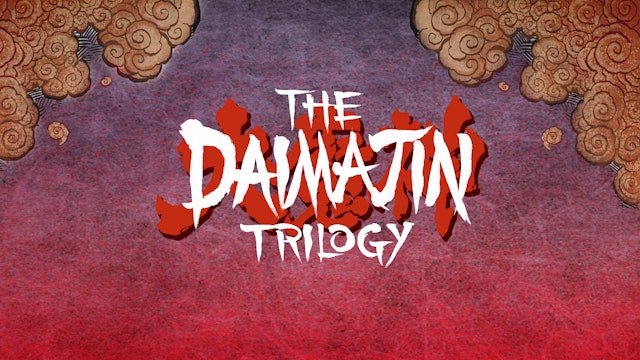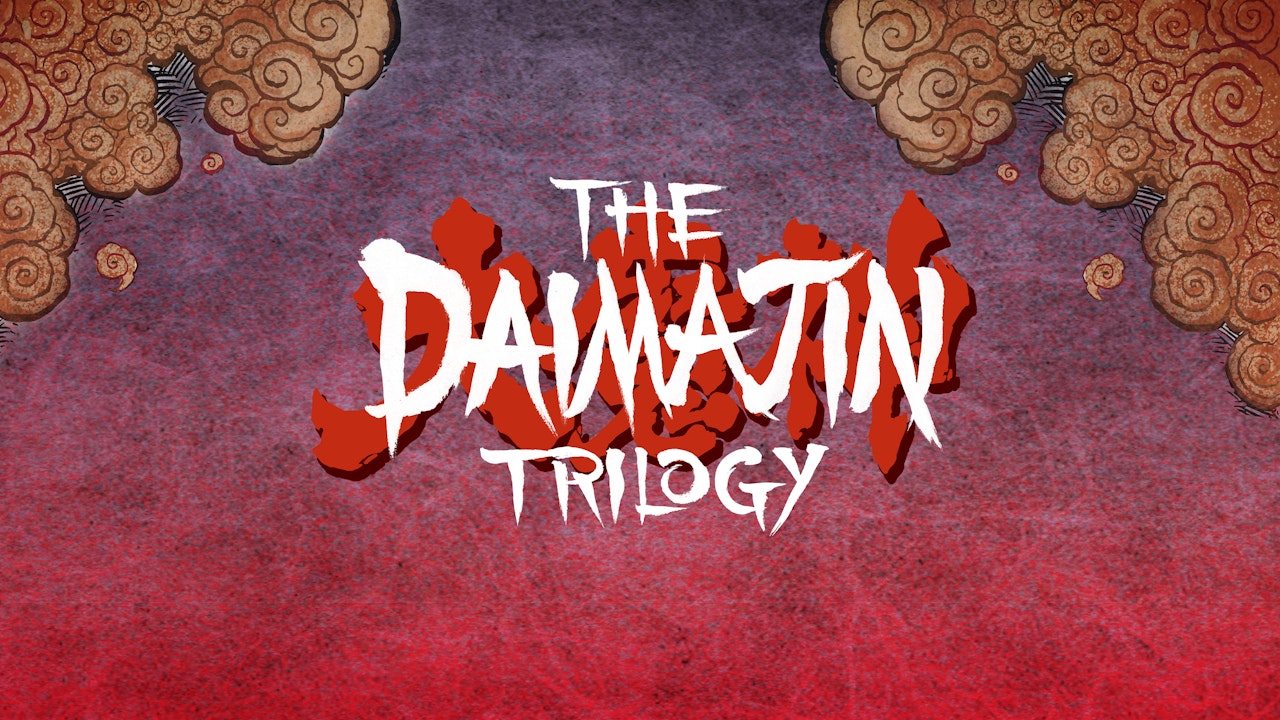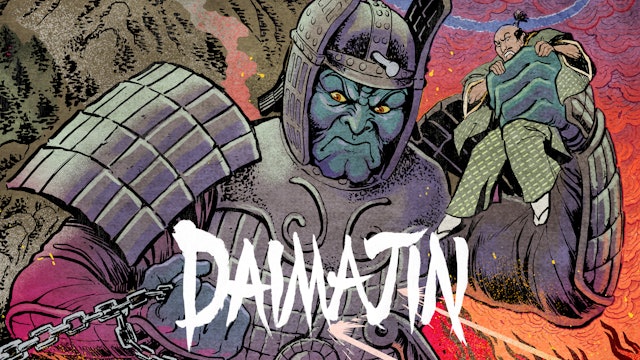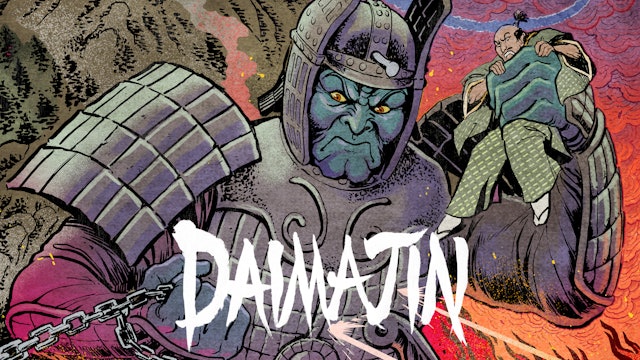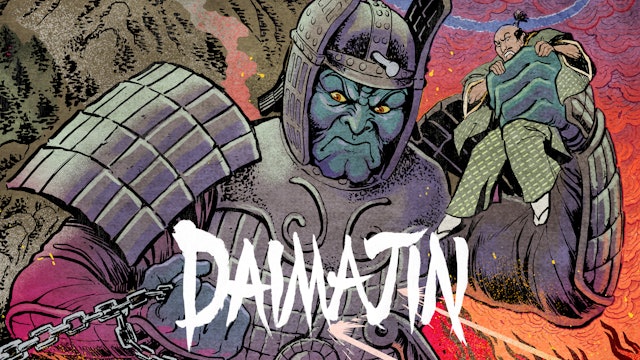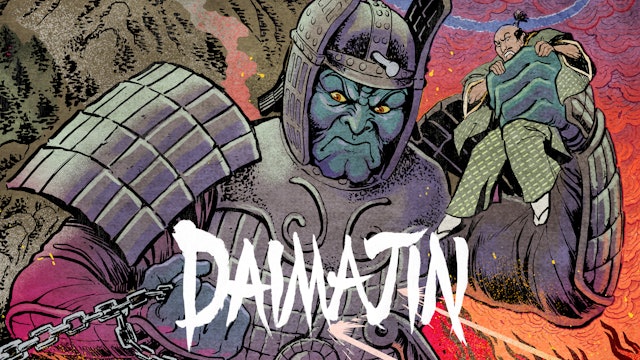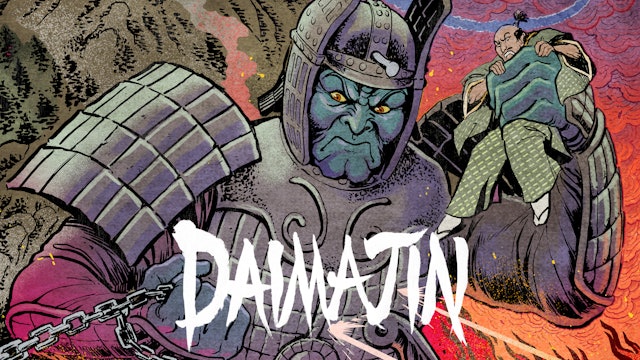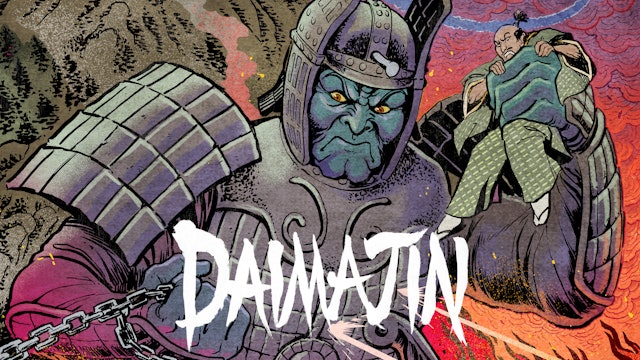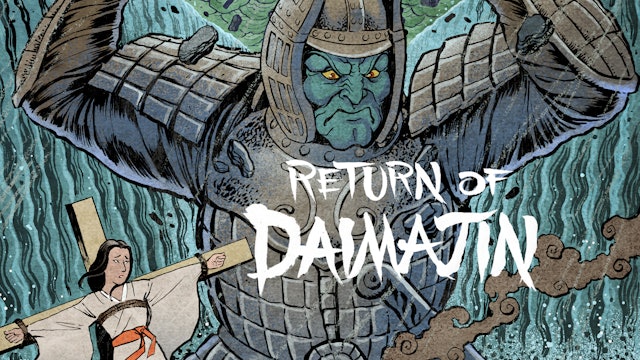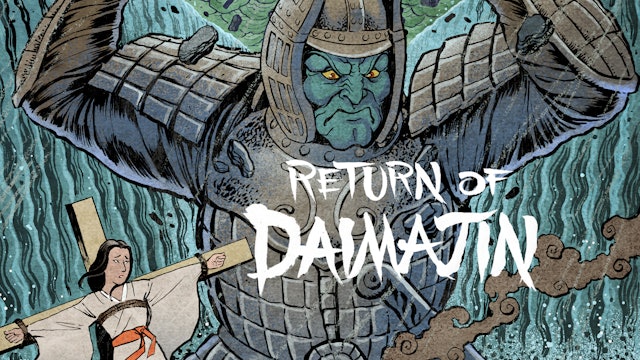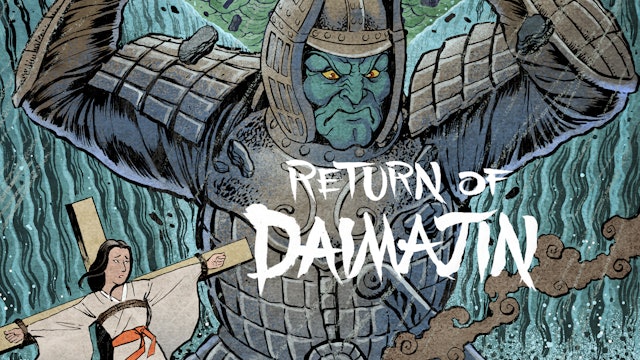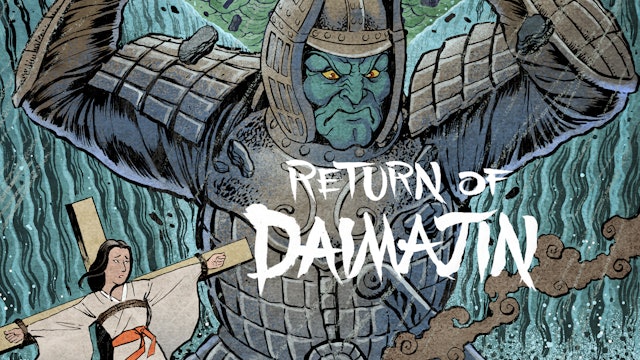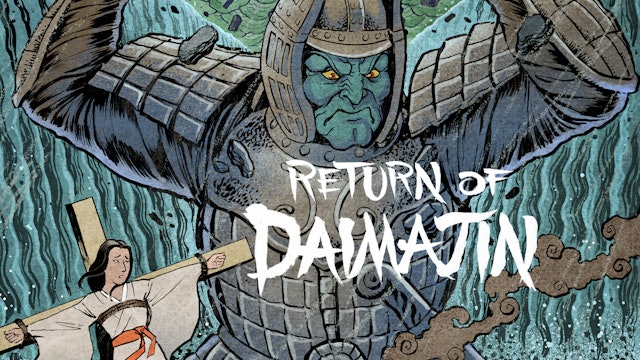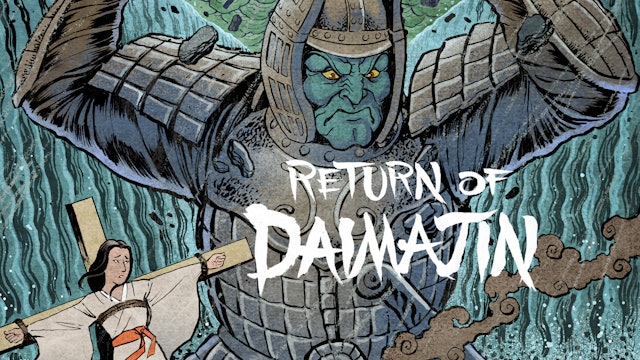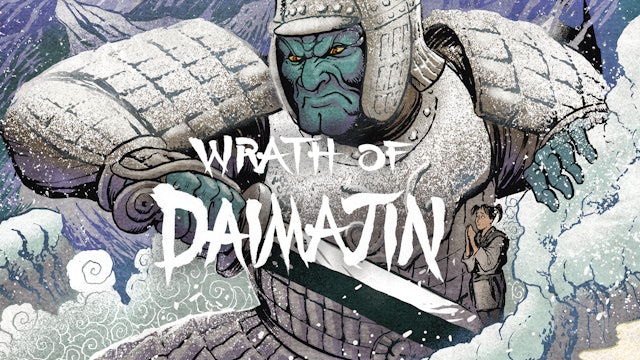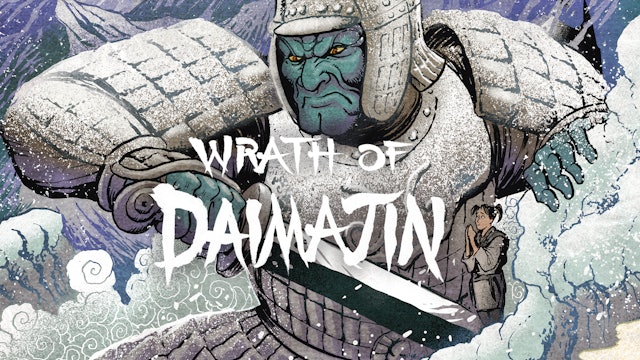The Daimajin Trilogy
The Daimajin Trilogy saw Daiei’s Kyoto studios bringing its own iconic movie monster to life in a unique but short-lived series that transplants the Golem legend to Japan’s Warring States period of the late-16th century.
In Daimajin, directed by Kimiyoshi Yasuda (Yokai Monsters, Zatoichi on the Road), the young son and daughter of the benevolent feudal lord Hanabusa flee to the mountains when their parents are slain by the treacherous usurper Odate. Ten years later, when the elderly priestess who has harboured them is also murdered, the rage of the slumbering ancient god that lies beneath the crumbling giant stone idol hidden deep in the forests in the mountains is invoked.
In Return of Daimajin, Kenji Misumi (Tale of Zatoichi, Lone Wolf and Cub) brings his usual stylistic flourish, as the wrathful deity is roused from his new home on an island in the middle of a lake by the violent incursions of a vicious warlord.
In the final film, Wrath of Daimajin, by veteran jidaigeki director Kazuo Mori, four young boys make a perilous trip to elicit the help of the ancient mountain god in freeing their family members who have been enslaved by a tyrannical lord.
Remarkably overlooked in the West, these three thrilling tales of feudal oppression and divine retribution meted out by the iconic stone warrior of the title combine lavish period detail with jaw-dropping special effects.
-
Daimajin
1966 • Japan • Directed by Kimiyoshi Yasuda
As the earth tremors beneath their feet, rumors of an ancient god called the Majin that lies beneath the rock abound amongst the peasant denizens of a small mountain village community ruled over by the benevolent feudal lord Handabusa (Ryūzо̄ Shimada)....
Extras
-
Introduction by Kim Newman
Newly filmed introduction by critic Kim Newman
-
Daimajin (English Dubbed)
1966 • Japan • Directed by Kimiyoshi Yasuda
As the earth tremors beneath their feet, rumors of an ancient god called the Majin that lies beneath the rock abound amongst the peasant denizens of a small mountain village community ruled over by the benevolent feudal lord Handabusa (Ryūzо̄ Shimada)....
-
Daimajin (audio-commentary with Stuart Galbraith IV)
Brand new audio commentary by Japanese film expert Stuart Galbraith IV
-
Bringing the Avenging God to Life
Bringing the Avenging God to Life, a brand new exclusive video essay about the special effects of the Daimajin films by Japanese film historian Ed Godziszewski.
-
Majin - The Monster of Terror
Alternate opening credits for the US release as Majin
-
Return of Daimajin
1966 • Japan • Directed by Kenji Misumi
On the shores of the mystical Lake Yakumo sit three villages. The despotic Lord Danjo Mikoshiba (Takashi Kanda) has his eye on the fertile lands of the peaceful Chigusa clan, and takes the opportunity to invade during a ceremony marking the passing of Lord...
-
The Return of Daimajin (English Dubbed)
1966 • Japan • Directed by Kenji Misumi
On the shores of the mystical Lake Yakumo sit three villages. The despotic Lord Danjo Mikoshiba (Takashi Kanda) has his eye on the fertile lands of the peaceful Chigusa clan, and takes the opportunity to invade during a ceremony marking the passing of Lord...
-
From Storyboard to Screen: Bringing Return of Daimajin to Life
From Storyboard to Screen: Bringing Return of Daimajin to Life, a comparison of several key scenes in Return of Daimajin with the original storyboards
-
Return of Daimajin (audio-commentary with Tom Mes and Jasper Sharp)
Brand new audio commentary by Japanese film experts Tom Mes and Jasper Sharp
-
My Summer Holidays with Daimajin
My Summer Holidays with Daimajin, a newly filmed interview with Professor Yoneo Ota, director of the Toy Film Museum, Kyoto Film Art Culture Research Institute, about the production of the Daimajin films at Daiei Kyoto
-
Return of the Giant Majin
Alternate opening credits for the US release as Return of the Giant Majin
-
Legacy interview with cinematographer Fujio Morita
Interview with cinematographer Fujio Morita discussing his career at Daiei and his work on the Daimajin Trilogy
-
Wrath of Daimajin
1966 • Japan • Directed by Kazuo Mori
Lord Arakawa (Tōru Abe) rules over a mountainous region of Japan with an iron fist, using kidnapped villagers as slave labor, mining materials from the steaming sulfur pits to produce gunpowder. A group of four young boys – Daisaku (Shinji Horii), Kinta (Mas...
-
Wrath of Daimajin (English Dubbed)
1966 • Japan • Directed by Kazuo Mori
Lord Arakawa (Tōru Abe) rules over a mountainous region of Japan with an iron fist, using kidnapped villagers as slave labor, mining materials from the steaming sulfur pits to produce gunpowder. A group of four young boys – Daisaku (Shinji Horii), Kinta (Mas...

